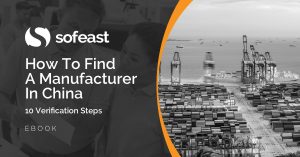In our daily jobs, we are in contact with hundreds of different manufacturing processes.
We don’t always have time to observe the process and use tools such as flow charts, FMEAs, and so on.
If that’s the case, how do we keep control more easily?
An easy equation for controlling process inputs & parameters
A good trick that I use is to draw an equation that follows this model:
GOOD OUTPUT = GOOD INPUTS x GOOD PROCESS PARAMETERS
Let’s look at the 3 parts of this equation, one by one.
- GOOD OUTPUT – you need to list what characteristics of the final product are really important. They need to be measurable.
- GOOD INPUTS – what does the process need, to be able to run? Labor, components, raw materials, and so on and so forth.
- GOOD PROCESS PARAMETERS – how should the process behave?
Using the equation to make a good cup of coffee!
Let’s take a simple equation. How to make a good cup of coffee?
OUTPUT (right amount of coffee with right taste at right temperature) = INPUTS (water + coffee powder + milk + sugar) x PROCESS PARAMETERS (temperature the water is warmed up to; type of filtering; drip speed; amounts of each input).
Based on this, what needs to be kept under control? As much as is practical, the quality of all inputs and the parameters’ values.
Examples of real manufacturing processes using this equation
Let’s take a few examples of real manufacturing processes:
1. Keeping an electroplating process under control
This is a chemical process. Like paint or anodizing, statistical process control is a must in order to avoid cases when an entire batch has to be reworked.
OUTPUT: nice appearance, thickness within tolerance, strong adhesion; no excess consumption of chemicals & electrical power; compliance with local regulation
INPUTS: well-cleaned metal parts (in baths with the right amount of the right chemicals, for the right duration and in right sequence) + good bath solution
PARAMETERS: good position of parts (no nesting, take part geometry into account, etc.) and of anodes & cathodes + the right current to be stable for the right duration + treatment of waste before release
Note: compliance with local regulations has gotten very important, as plating can be a very polluting process and many plating factories have been shut down in China in 2017 and 2018. And the cheapest way to reduce water emissions… is to avoid having to rework non-conforming batches!
2. Keeping the fabric cutting process (for garment production) under control
OUTPUT: pieces of the right fabric cut in the right dimension and as specified (e.g. at a certain angle based on the grain line); no excess waste of fabric
INPUTS: the right fabric in the right quantity
PARAMETERS: the way and the duration for which the fabric is laid flat before cutting; the way it is cut (e.g. all-automated, or manually with a fixed vertical knife) and the associated precision; the sharpness of the knife; the skill of the cutter(s); and so on.
What matters can vary widely:
- In case the cutting is all-automated, preventive maintenance, as well as good management of the different cutting and programs, is very important.
- In case it is highly manual, the procedure followed as well as the operators’ skills make all the difference.
- And, of course, the fabric needs to be up to spec, and count very few defects, in all cases!
—
Do you use a similar equation to get a good output, or find mine useful? Let me know by leaving a comment below!
Are you wondering how to find a manufacturer in China who is well-suited to your needs and can also deliver on their promises?
Sofeast has developed 10 verification steps to help you find the right manufacturer. They’re shared in this FREE eBook: “How To Find A Manufacturer In China: 10 Verification Steps.”
It covers:
- Background checks
- Manufacturing capabilities
- Quality system auditing
- Engineering resources
- Pricing, negotiation, & contracts
- …and much, much more
Just hit the button below to get your copy:

